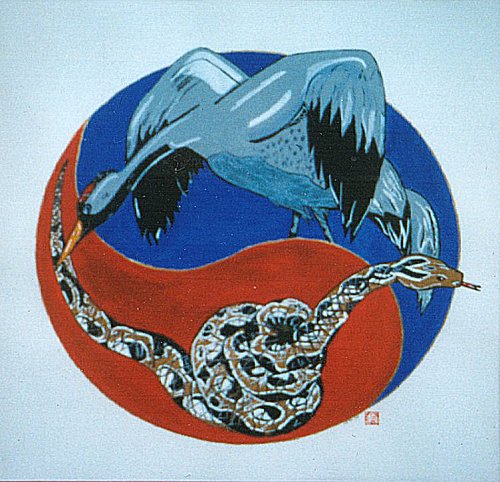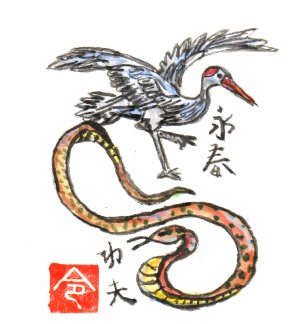"The Tale of the Snake and Crane"
by Rien Bul

|
I guess we all know the tale of the nun Ng Mui observing a fight between a snake and crane, devising a whole new fighting style from this experience. It often amazes me how many take it as an actual historical event. Of course, the story is just an analogy that teaches us the most basic but profound principles of our style. Whenever a crane is being attacked, it stays calmly in place. If the adversary tries to get around it, it just turns around its own axis, continually facing its opponent. This principle has been much misunderstood . Because Weng Shun Kuen stylists are taught to keep facing their opponent, many think it means to keep facing the adversary, nose to nose, through all the stages of the fight. Even when it would be more practical to go to his blind side. |
|
No matter how much an opponent moves, or how threatening or big its gestures are; the crane never gets excited. It stays calm and centered, just observing what is coming. The story of the snake and crane is also found in other, more or less Weng Shun Kuen related styles such as Tai Chi Chuan (another so called "Wudang"-style) and Hung Kuen (also conceived by the rebels on the red opera-junks). In these styles it represents the same principles. |

|